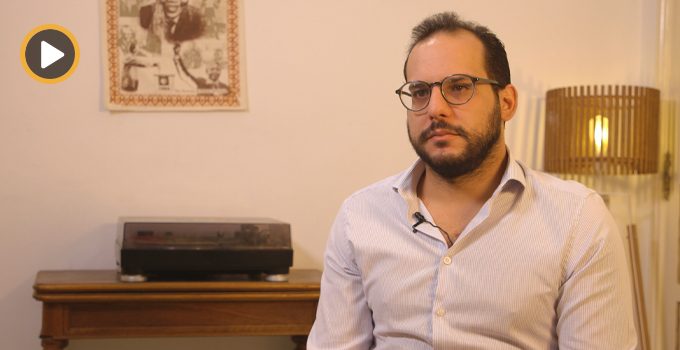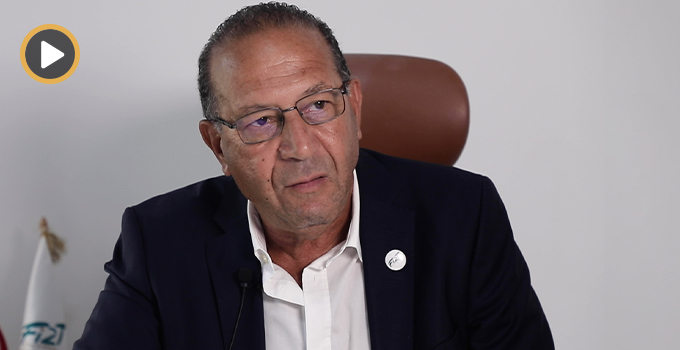
Government’s plan for development: reform, investment, public-private partnerships
Let’s liberalize our economy
On June 14, Minister of Development Yassine Brahim outlined the Ministry’s Strategic Plan 2016-2020 in a conference on “Finance, PPP, and Sustainable Development.” Standing before a full room at the headquarters of the influential think tank IACE (Arab Institute of Business Owners), Brahim hurried through a lengthy slideshow, taking care to emphasize above all the imperative of investment. Noting that the government has invested in the country’s regions, the Minister insisted that it accompany and encourage the private sector to follow suit. He prescribed public-private partnerships for energy, water, waste management and sanitation projects and, acknowledging concerns in light of unsuccessful PPP projects, Brahim insisted that the country’s capacity to execute development projects alone is insufficient. And so, “practically, realistically, it is inevitable that we move towards PPP. Let’s work instead on how to pursue them while minimizing the risks […] it’s a good way to accelerate the country’s development.”
In order to position the country as an economic hub within the international market, he argued, it will be important to market the country, to facilitate investment. In short: “let’s be welcoming, let’s liberalize our economy.”
While the draft law was still being examined in parliament, the Ministry of Development, Investment, and International Cooperation released a Strategic Development Plan 2016-2020. Depicting an “alternative development model” which will position Tunisia as an “economic hub,” the Plan prescribes the “effective improvement of the business environment, as well as advancements in the execution of sweeping reforms, above all the modernization of the administration, the revision of the public markets system, the promulgation of the new investment code, the pursuit of fiscal and financial sector reforms, as well as the adoption of a voluntary policy to promote public-private partnerships.”
Ambitious objectives, less-than-ambitious PPP project list
Several times throughout her turn, lawyer Maya Boureghda Chebeane referred to the plan’s ambitious objectives, and more precisely the “ambitious PPP policy.” A specialist in public-private partnerships, Chebeane touched on the prerequisites for such an initiative in Tunisia: macroeconomic stability, efficiency of the finance system, a clear legal regime to protect the rights of investors, and the capacity of the government to engage with the private sector.
Chebeane explained that the public’s general disapproval of PPP stems from a poor understanding of a complex instrument, and is prompted by rather unsuccessful PPP experiences in France and England. If France has failed, how can we be successful in Tunisia? she asked, echoing public concerns. But, she pointed out, only 6% of all PPP projects in France have been unsuccessful, and this because administrations were not ready to negotiate contracts. “When we take stock of certain projects that have been carried out, we realize that it wasn’t a problem of execution, but of negotiating contracts. Today, it is urgent that the administration be reformed and modernized.”
She recommended tripling, even quadrupling, the list of prospective PPP projects, since the possibilities for such initiatives are vast—social, cultural, recreational. “It’s not a miracle—I’m not suggesting that everything be PPP, indeed, quite the opposite. But I think the list can be more ambitious in terms of a voluntary PPP policy.” Finally, she compelled decision-makers to prioritize the factor of time, and explained the urgency of addressing prerequisites and also undertaking preliminary studies. A number of proposed projects were already the subject of studies which, having been completed two or three years back, are now obsolete.
Improving public services / absorbing government spending
As the Bretton Woods Project points out, international institutions have promoted public-private partnerships in large-scale infrastructure projects as a “silver bullet” of economic recovery. The European Union, Asian Development Bank, and African Development Bank have all produced their own publications analyzing PPP, while the World Bank alone maintains five PPP websites, not including the International Finance Corporation online resource dedicated to the topic. In its Guidebook on Promoting Good Governance in Public-Private Partnerships (2008), the United Nations described PPP as “an important tool for improving economic competitiveness and infrastructure services.” According to the UN, PPP are “innovative methods used by the public sector to contract with the private sector, who bring their capital and their ability to deliver projects on time and to budget, while the public sector retains the responsibility to provide these services to the public in a way that benefits the public and delivers economic development and improvement in the quality of life.”
In anticipation of Tunisia’s adoption of PPP legislation last year, the Organization of Economic Co-operation and Development (OECD) published an extensive report considering that “Public-private partnerships (PPP) can play an important role in the inclusive and sustainable growth in Tunisia if the right conditions are in place.” In June 2015, the Tunisian Observatory of Economy (OTE) produced a concise analysis of and recommendations for the PPP draft law which concluded that “Public-Private Partnerships do not complete government spending but rather absorb it. We can talk about the “capture of government spending by the PPP.” The Observatory warned that PPP contracts are “not an alternative to debt,” explaining how the government’s financial obligations (reimbursement of capital, interest paid throughout the duration of the contract period) in PPP contracts are recorded in a way that disguises the public debt that they incur.
The OTE also noted the implications of flawed preliminary studies which fail to present a thorough comparative analysis of proposed PPP projects. Such has been a factor of Quebec’s infamous public-private partnership experience, where “the PPP track record is perceived in a negative light.” Five years after its creation, the Public-Private Partnership Agency of Quebec closed its doors in 2009, having faced a great deal of criticism and resistance since, with each proposal submitted, “projects were executed in PPP, whereas that was not necessarily its objective.” In spite of the Agency’s replacement by Infrastructure Quebec, an organism set up to analyze and decide project execution type on a case-by-case basis, skepticism remains significant as assessment studies in favor of PPP have been qualified as biased and insufficient to justify the selection of such contracts over conventional methods.
And still, Tunisia pushes forward
In spite of warnings that PPP legislation is premature and the red flags raised by certain experiences abroad, Tunisia’s ARP adopted Draft law 69/2012 concerning public-private partnership (PPP) contracts in November 2015. Debate around the projected and actual implications of these contracts has in many ways run parallel to controversy surrounding Tunisia’s negotiations for a Deep and Comprehensive Free Trade Agreement (DCFTA) with Europe. Proponents of both initiatives argue that they will encourage and even catalyze necessary reforms and the modernization of administrative procedures, while others anticipate the deleterious impact of such asymmetrical partnerships on Tunisia’s economic, and ultimately political, autonomy. In both contexts, public concern and resistance have proven insufficient to halt or at least defer what seem to be inevitable trends within a process of economic liberalization.




iThere are no comments
Add yours